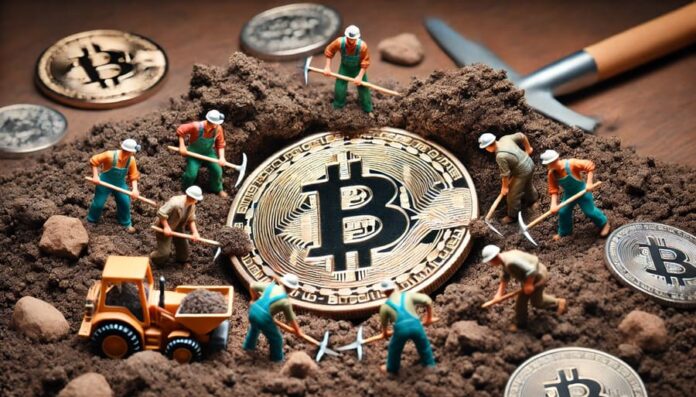Cryptocurrency mining has evolved significantly over the years, transforming from a hobbyist activity to a highly competitive industry. As the complexity of mining grows, individual miners find it increasingly challenging to achieve profitability. This is where mining pools come into play. What is mining pool, and how does it work? Let’s discuss these and other questions in this article.
What is Mining, and What is a Mining Pool?
Mining is the process by which cryptocurrency transactions are verified and added to the blockchain. Miners use computational power to solve complex mathematical problems in order to mine Bitcoin and other cryptocurrencies. Successful miners receive a block reward, which includes newly minted coins and transaction fees.
Over time, the mining process has become increasingly complex. Many crypto assets have become hard to mine, so miners have been fighting to obtain mineable cryptocurrencies.
The difficulty of the mathematical problems that need to be solved increases as more miners join the network and as more blocks are mined. This heightened complexity requires more advanced and expensive mining equipment, such as specialized ASIC (Application-Specific Integrated Circuit) machines, which can cost thousands of dollars.
Additionally, the energy consumption required for mining has surged, leading to higher operational costs. These challenges have made it difficult for individual miners to compete and become profitable on their own. Consequently, mining pools emerged as a solution to these difficulties, allowing miners to pool their resources and share the rewards.
A crypto mining pool is a collective group of cryptocurrency miners who combine their computational resources over a network. By working together, these miners increase their chances of successfully mining a block and receiving a reward. The reward is then distributed among the pool members based on their contribution to the mining process.
How Does it Work?
Mining pools operate by pooling the computational power of all members. When a pool successfully mines a block, the reward is shared among the participants. The distribution is typically proportional to the amount of work each miner contributed, measured in shares. Here’s a detailed description of the mining process in a pool:
- Joining a pool. Miners join a pool by connecting their mining hardware to the pool’s server. This connection allows them to contribute their computational power to the pool.
- Work assignment. The pool server assigns smaller, manageable tasks to each miner. These tasks involve finding solutions to parts of the mathematical problem needed to mine a block.
- Submitting shares. Miners work on their assigned tasks and submit proof of their work (called shares) back to the pool. Shares are easier to find than a full-block solution and serve as proof that the miner is contributing to the pool.
- Solving the block. When a miner in the pool finds a solution to the full block problem, the block is added to the blockchain, and the pool earns the block reward, which includes the transaction fee reward.
- Reward distribution. The pool distributes the block reward among its members based on the number of shares each miner submitted. This ensures that each miner is compensated fairly according to their contribution.
Advantages and Disadvantages of Mining Pools
Advantages:
- Increased profitability. Mining pools allow individual miners to combine resources, increasing their chances of earning a cryptocurrency reward. This collaboration makes it easier for smaller miners to become profitable.
- Steady income. Pools provide a more consistent income compared to solo mining. While solo miners might wait longer to solve a block, pool members receive more regular payments.
- Reduced variance. By participating in a pool, miners experience less variance in their earnings. This stability can be particularly beneficial in the volatile crypto market.
Disadvantages:
- Most mining pools charge a fee for their services. These fees can eat into the miners’ profits, especially if they are not mining large amounts of cryptocurrency.
- Large mining pools can lead to centralization, which goes against the decentralized nature of cryptocurrencies. This centralization can also increase the risk of a 51% attack (a pool that controls over 50% of the network can initiate a 51% attack on this network).
- Dependency on pool operator. Miners depend on the pool operator for the fair distribution of rewards and proper management. Any mismanagement or fraud by the operator can affect all members.
Mining pools have become an essential part of the cryptocurrency mining landscape. By pooling resources, crypto miners can increase their chances of earning a block reward and achieve a more stable income. However, it is crucial to consider the potential disadvantages, such as fees and centralization. Understanding how mining pools work can help miners choose the best approach to maximize their profitability in the competitive world of crypto mining. Popular mining pools continue to attract miners, but it is always advisable to research and select a pool that aligns with individual goals and offers fair distribution policies.
Disclaimer: This article contains sponsored marketing content. It is intended for promotional purposes and should not be considered as an endorsement or recommendation by our website. Readers are encouraged to conduct their own research and exercise their own judgment before making any decisions based on the information provided in this article.


































































